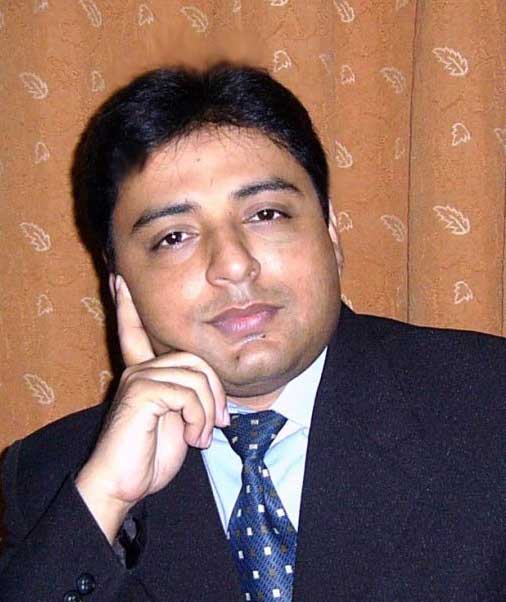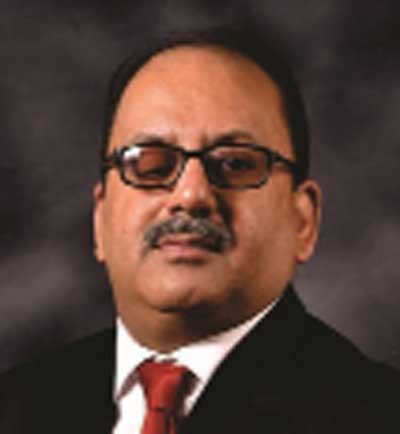We, the generation that started its schooling with the dawn of 80s, under the rule of General Muhammad Zia-ul-Haq that was marked with a specific socio-political scenario and an exclusive religious doctrine, have been brought up with an infused spirit and reinforced perception that Russian invasion of Afghanistan was actually a battle between the Muslims or Islam and the Infidels or anti-Islam forces and it would definitely extend to Pakistan. Being brought up in a conventional and rightist family of educationists, I often found my elders and their relatives or visitors apprehensively talking about the imminent attack on Pakistan by India and Russia combined. The most irritating and mindboggling fact for me, as a school going kid, remained the repeated news that had become a part of the main news bulletin of our state-owned channel, the PTV. The news used to read, “The Afghan fighter planes violated our airspace, once again, today, and our government has called Afghan ambassador and officials to lodge official protest, and warned them of serious consequences in case of repeating any such incident in future.” Moreover, the incidents of killing our innocent little children by alluring them to deliberately placed toy-bombs on the roadsides in the bordering villages of the NWFP (KPK) province of Pakistan were not digestible for all of us, the children, because we believed we were helping Afghanistan in fighting against the enemy.
The war went on and on covering several milestones, taking various twists and involving, directly or indirectly, more nations like the United States, Saudi Arabia, and Iran and, later on, it turned into the “Afghan War” with a totally different theatric settings and entirely changed role played by the leading character, the USA. Apart from the changing in plot and direction, the cast crew, too, was changed and expanded to so many other states. As we grew up, the mystery, complications and confusions about the subject war, too, grew up with us because we witnessed many paradigm shifts in regard to diplomatic, strategic, and socio-political stances and theories associated with the war. Apart from that, the changing in the insights regarding allies and opponents on the basis of religious policies, from time to time, too, added to the dilemma, and, now, after more than forty years, it is not very simple to answer who was-is-would-be the real sponsor, winner, or loser of the long saga of that bloodshed. If we have a cursory glance at the current situation of Afghanistan, we are reality bound to admit that the whole epic of the last 40 years was a circular expedition and the history is visiting the same zero-point where the conflicts and the related interests of the blocs set the stage for changing the route-map of the history and geo-political transformation. The one line, in the overall crisscross network of the recent history, which proceeded further with straight and vertical pattern was the red line of many innocent people’s massacre and their families’ obliteration. After the unfortunate Afghanistan, we, the Pakistanis, have suffered the worst and the most fatal blow of this series of wars and the connected attacks of terrorism. Did we gain something out of it?
Naturally speaking, the civilisations, settlements and tribes of human beings have always been formed on the basis of cultural and lingual commonalities and ethno-racial bonds: moreover, the modern-day nation-states, too, are a clear reflection of human psyche that entices them to be integrated on the basis of ethno-lingual and cultural ties. Pakistan and Israel are two exceptional states formed on the grounds of religious union beyond the thought of and across the cast, creed, race, language and ethnicity. Analytically speaking, Afghanistan is a unique state or region that does not follow the both of historically perceived notions and, hence, is proved to be quite an intricate entity or reality.
Historically speaking, even before the foreign invasions by the diverse nations and regions, Afghanistan had been suffering ethno-racial conflicts, tribal revolts, civil wars and other such internal upheavals. Besides, it is very difficult, nay, impossible to claim that all the external attacks were fully external and had nothing to do with or supported by the internal ethnic, tribal, political or sectarian groups that were anti-central government or state. It is a universally acknowledged veracity that any internal mutiny cannot be affective unless it is supported by a neighbouring or other foreign state and no nation can be conquered by any external force unless it is supported by the internal renegades or rebels. Centuries-old tug-of-war amongst the socio-politically poles-apart racial segments of the so-called Muslim society such as Pashtuns, Uzbeks, Hazaras, Tajiks, Aimaqs, and other small ethnic groups had already played havoc with the local population and proved that it was not very simple to call them a nation-state. Besides, the element of sectarian conflicts, fueled by the neighbouring states and other global powers to safeguard their political interests, has created further lines of demarcations within the local communities and minimised the opportunities for bringing up a collective national character and socio-political cooperation in today’s Afghanistan.
In addition to that, the historical intra-Pashtun conflict between the tribes of the Durranis and the Ghilzais, stemmed from the invasion of the Ghilzais, the rural tribes of today’s Afghanistan by the Persian Durrani dynasty, in 1747, has drifted the case further towards the chaotic nature of the Afghan issues. Here, this crucial twist of the history is worthy of mentioning that Mullah Umar, who accidently emerged as a great political and military leader and founder of the Taliban, was a Ghilzai by origin and more than 90% of his followers, too, were from the subject tribe and the same rural region. Hamid Karzai, on the other hand, belonged to the elites of Durrani tribe, living in the urban Afghanistan. So, another line of clash and hostility was the notion in the minds of the Taliban that the invaders and the foreign Pashtun tribes were cooperating with the US forces to destroy the political and cultural roots of traditional and indigenous Afghanistan comprising mostly Eastern tribes. In response to the sheer unrest and resentment amongst the non-Pashtun groups, after the new constitutional framework, introduced in 2004, the Pashtun President Ashraf Ghani had to sign a power-sharing treaty with the Tajik Chief Executive Abdullah Abdullah to create a National Unity Government. But, this move, too, couldn’t bring any socio-political stability in Afghanistan or its governance because, the issues are multidimensional and the lines of divisions are not only horizontal and vertical, but have, now, got to a network of crisscrossing angles.
Peeping into the socio-political fabric of Afghanistan and its diverging threads, it has always been a region of Pro-Pakistan, Pro-Russia, Pro-Iran, Pro-West and some indifferent tribal segments of the population that had hardly been a solidly woven texture. Here, one thing must be clearly understood that certain above-mentioned ethnic, ideological, religious or sectarian groups do not cherish any emotional or dedicative association with the neighbouring countries, but they are bound to side with them for the sake of their vested interests. For example, if the Pashtuns side with Pakistan, in the broader-spectrum regional conflicts, they are actually concerning the Pashtun population, including their relatives, settled in the bordering KPK and Baluchistan provinces of Pakistan and this very fact, the other side of this affiliation, is a complete threat to Pakistan’s solidarity and even ideology. This community-based or race-centric bond, across the Durand line, is solely aimed at breaking Pakistan not only geographically, but ideologically also. Same is the case with the Hazaras tribesmen who attach themselves to and are supported by Iran on the basis of sectarian commonalities and the inter-dependent vested interests only and there isn’t any concept of unconditional love, sincerity or devotion. It is exceptionally desirable to mention, here, that this straight line of unity is not confined to only Iran and Afghanistan, but it, directly or indirectly, involves Pakistan as well. The role of both the above-mentioned states in creating law and order issues in the bordering province of Baluchistan by fanning and maneuvering separatist movements and ethno-lingual prejudices amongst the masses is an open secret to all and sundry.
The Durand line existing between Pakistan and Afghanistan, instead of a transparent international boundary, is a very vivid and concrete line of conflict, in this regard, and entangles both religious ideology as well as ethno-lingual concept of unity in a weird way that it becomes challenging to address the issue. The tense relation between Pakistan and Afghanistan have witnessed several ups and downs like acts of violation of sovereignty of Pakistan and direct invasions by the Afghans to separate the bordering areas and annex them. The culminating point was the closure of diplomatic corridors between the neighbors that occurred, in different phases of 74-year long history of Pakistan. Methodically speaking, most of the rulers or invaders, preceding European attackers, were hailing from Afghanistan region or its surrounding areas. The rest of the assailants, excluding Arab warriors who approached the subcontinent via sea route, used Afghanistan as a launching pad or gateway to Indian subcontinent. The subsequent historical phases increased the number of Muslims, whether migrants or local converts, and paved the way for the historical Two-nation theory and the associated creation of Pakistan. During eighteenth and nineteenth centuries and the first half of the twentieth one, most of the areas of today’s Afghanistan have been a part of subcontinent and Punjab under the British and Sikh rulers. So, the question arises, here, is why the two-nation theory was confined to the Durand Line and was not applied to the Muslims of Afghanistan. Another concerning dilemma is why the Afghan Pashtuns have always been busy in conspiring against the solidarity of the Islamic Republic of Pakistan and venturing to get the NWFP (KPK) province separated on ethno-racial and lingo-tribal basis. This notion shatters the whole spirit of the Two-nation theory or Islamic Ideology. So, it is highly irrational and equally mindboggling to expect the formation of cordial relations between the two countries unless the line of “divide” is not pondered over on rational, political, religious and humanitarian grounds.
Another diagonal angle, crossing all other threads, is culturo-economic divide between the educated, well-off and elite class that urges for a communist state or a modern and western type of democracy and the lower-middle and comparatively less-educated one comprising tribal masses that have firm faith in purely tribal and Islamic community system and regard socialism, Marxism or any such system as an anti-religious campaign. It is interesting, here, to observe that better, especially foreign, education and the economic affluence have transformed some people and families to an extent that they, now, cherish their political and civic views beyond any cavil of tribal, lingual, sectarian, ethnic and religious affiliation and sentiments. Had there not been the “People’s Democratic Party of Afghanistan” (a Marxist party), there would not have been the coup against the government of the President Mohammad Daud Khan by left-wing military officers led by Nur Mohammad Taraki. The party developed further breaches and was divided into two socialist groups named “Khalq Party” and “Parcham Party”. Had such Afghani political leaders, with a little popularity amongst the masses and even within their own parties, not resorted to the Soviet Union for support and patronisation, the way for the Soviet invasion would not have been paved. This invasion changed the whole geo-political and strategic approaches and scenarios of the major global quarters and brought forth the subsequent emergence of Taliban, Mujahedeen, Al-Qaida and other such types of the fighting groups and the further wars and an unending series of acts of terrorism that resulted in sheer human disaster, beyond any discrimination. However, the human and the monetary loss of the major war-mongers and the terror-sponsors cannot be compared to the catastrophe and cataclysm of the Afghanistan’s poor and hapless people.
Driving home the point, the world is still vehemently pondering over, analysing and discussing about the pains and gains of the global powers and international organisations and agencies, and ruthlessly ignoring the prospects of the most affected, dejected and grieved bipeds of Afghanistan that desperately needs the world community’s sincere help on humanitarian grounds. It is highly painful to observe that the advocates of humanity, peace, justice and fair-play are feeling relieved and satisfied only with the fact that the major military powers of the world have been punished for their oppressive and cruel approach towards the weaker nations and have been taught a lesson by the nature. Will this notion or thought be enough to heal the wounded Afghanistan and its bleeding souls? Consciously or unconsciously, we believe that 20-30 coffins of the Afghani people are equal to just one white soldier’s coffin and that is our criterion of justice. It does not matter whether the super powers, the UNO and other concerning global entities learn any lesson from their criminal blunders or not. But, definitely, it is the most crucial historical juncture for Afghanistan and its all segments of the society who must learn a lot of lessons from this epical war and its preambles and postscripts. If they do not mend their ways, they will be cursed to undergo such calamities till the doomsday.
Sign in
Welcome! Log into your account
Forgot your password? Get help
Password recovery
Recover your password
A password will be e-mailed to you.






